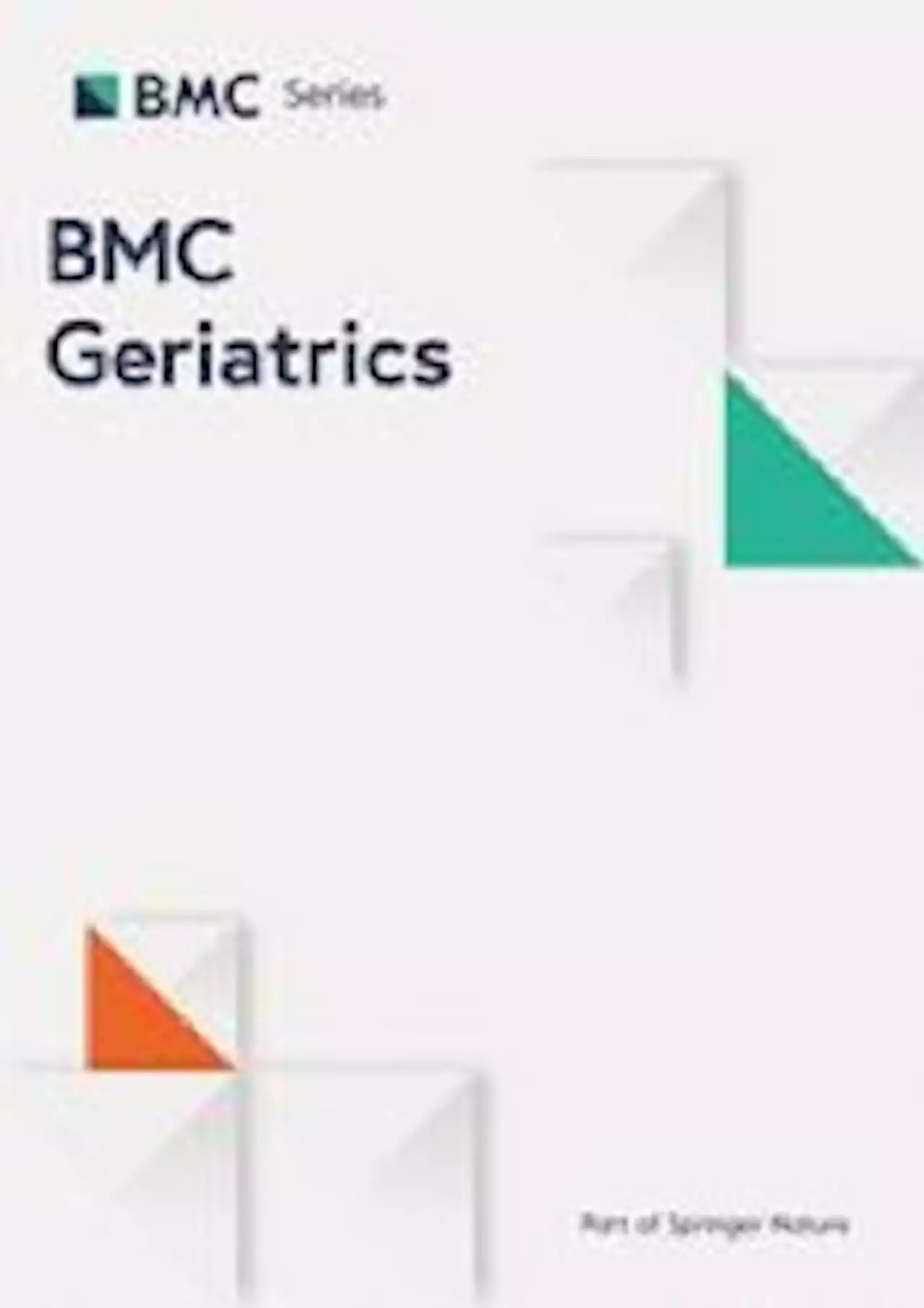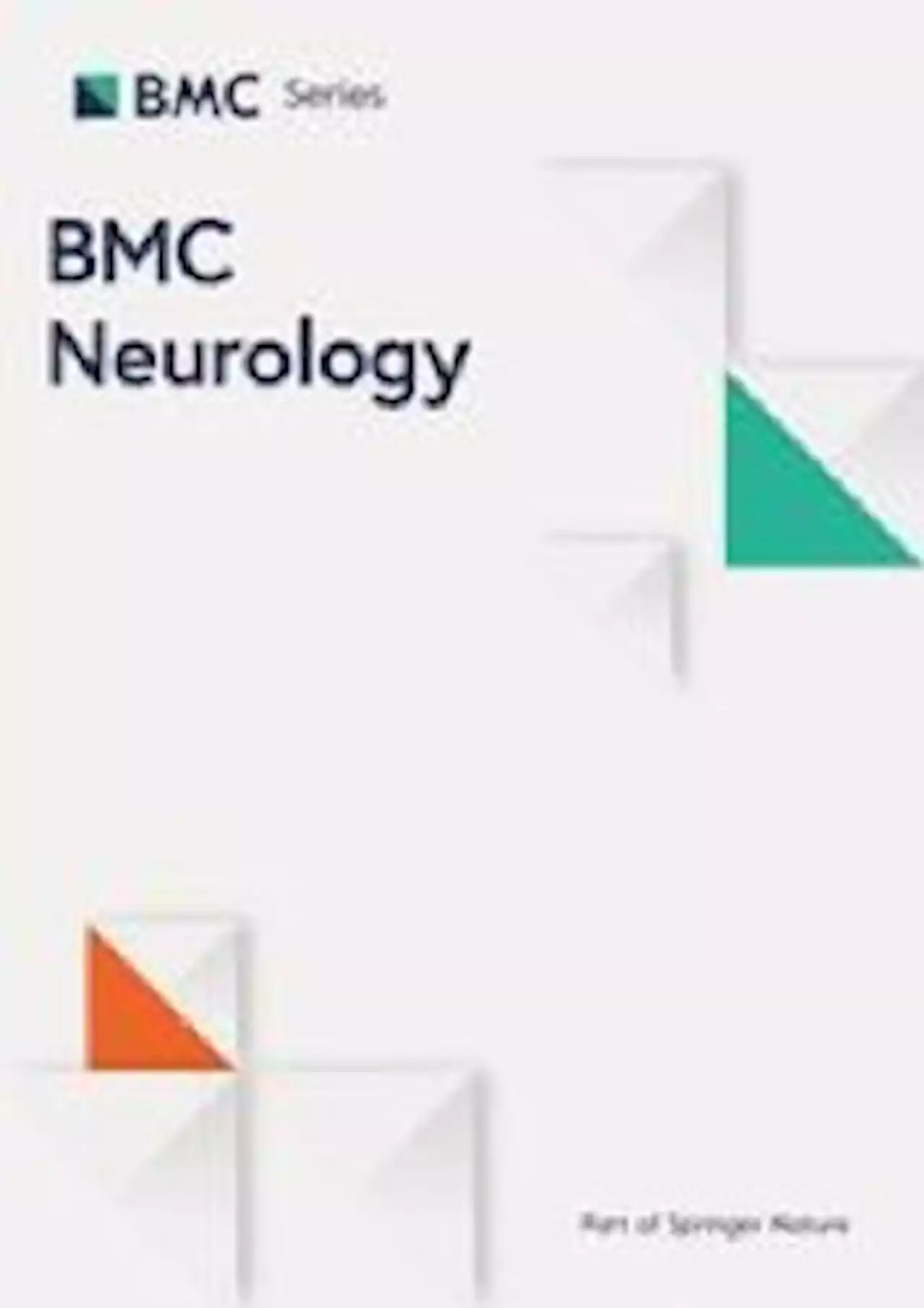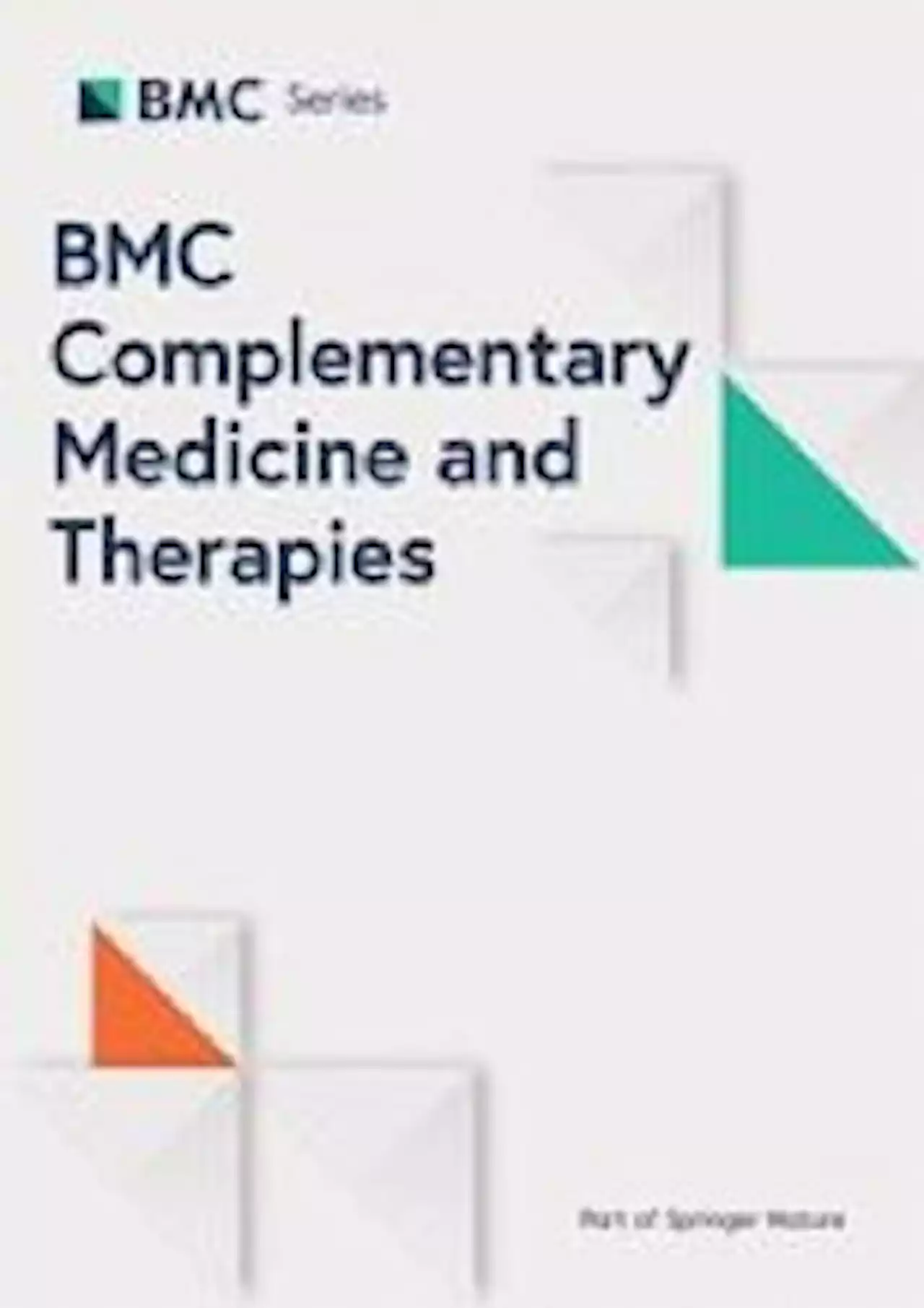A study in BMCGeriatr finds that older adults in Taiwan with depressive symptoms reduce their participation in leisure activities, leading to the degeneration of cognitive function. The authors suggest addressing these depressive symptoms at the earliest.
]. However, the relationship between lifestyle factors, cognitive decline, and depressive symptoms has not been extensively studied. The role of mediators between depressive symptoms and the subsequent cognitive decline remains unclear.
We aim were to determine whether cognitive decline in depressive patients can be slowed down through certain mediators, thereby reducing the prevalence of dementia, used mediation analysis [ There were 5377 subjects in 2003, 4577 subjects in 2007, and 3727 subjects in 2011. To investigate the development of cognitive function decline, we excluded 266 subjects with abnormal cognitive function at baseline . We excluded 376 subjects in 2003, 1,600 subjects in 2011, and none in 2007 as these subjects had missing values for cognitive function . A total of 3,135 participants completed three waves of follow-up and provided complete data.
Ireland Latest News, Ireland Headlines
Similar News:You can also read news stories similar to this one that we have collected from other news sources.
 Chronic health conditions and mortality among older adults with complex care needs in Aotearoa New Zealand - BMC GeriatricsBackground Older people have more comorbidities than younger groups and multimorbidity will increase. Often chronic conditions affect quality of life, functional ability and social participation. Our study aim was to quantify the prevalence of chronic conditions over a three-year period and their association with mortality after accounting for demographics. Methods We conducted a retrospective cohort study using routinely collected health data including community-dwelling older adults in New Zealand who had an interRAI Home Care assessment between 1 January 2017 and 31 December 2017. Descriptive statistics and differences between variables of interest among ethnic groups were reported. Cumulative density plots of mortality were developed. Logistic regression models adjusted for age and sex to estimate mortality were created independently for each combination of ethnicity and disease diagnosis. Results The study cohort consisted of 31,704 people with a mean (SD) age of 82.3 years (8.0), and of whom 18,997 (59.9%) were female. Participants were followed for a median 1.1 (range 0 to 3) years. By the end of the follow-up period 15,678 (49.5%) people had died. Nearly 62% of Māori and Pacific older adults and 57% of other ethnicities had cognitive impairment. Diabetes the next most prevalent amongst Māori and Pacific peoples, and coronary heart disease amongst Non-Māori/Non-Pacific individuals. Of the 5,184 (16.3%) who had congestive heart failure (CHF), 3,450 (66.6%) died. This was the highest mortality rate of any of the diseases. There was a decrease in mortality rate with age for both sexes and all ethnicities for those with cancer. Conclusions Cognitive impairment was the most common condition in community dwelling older adults who had an interRAI assessment. Cardiovascular disease (CVD) has the highest mortality risk for all ethnic groups, and in non-Māori/non-Pacific group of advanced age, risk of mortality with cognitive impairment is as high as CVD risk. We obser
Chronic health conditions and mortality among older adults with complex care needs in Aotearoa New Zealand - BMC GeriatricsBackground Older people have more comorbidities than younger groups and multimorbidity will increase. Often chronic conditions affect quality of life, functional ability and social participation. Our study aim was to quantify the prevalence of chronic conditions over a three-year period and their association with mortality after accounting for demographics. Methods We conducted a retrospective cohort study using routinely collected health data including community-dwelling older adults in New Zealand who had an interRAI Home Care assessment between 1 January 2017 and 31 December 2017. Descriptive statistics and differences between variables of interest among ethnic groups were reported. Cumulative density plots of mortality were developed. Logistic regression models adjusted for age and sex to estimate mortality were created independently for each combination of ethnicity and disease diagnosis. Results The study cohort consisted of 31,704 people with a mean (SD) age of 82.3 years (8.0), and of whom 18,997 (59.9%) were female. Participants were followed for a median 1.1 (range 0 to 3) years. By the end of the follow-up period 15,678 (49.5%) people had died. Nearly 62% of Māori and Pacific older adults and 57% of other ethnicities had cognitive impairment. Diabetes the next most prevalent amongst Māori and Pacific peoples, and coronary heart disease amongst Non-Māori/Non-Pacific individuals. Of the 5,184 (16.3%) who had congestive heart failure (CHF), 3,450 (66.6%) died. This was the highest mortality rate of any of the diseases. There was a decrease in mortality rate with age for both sexes and all ethnicities for those with cancer. Conclusions Cognitive impairment was the most common condition in community dwelling older adults who had an interRAI assessment. Cardiovascular disease (CVD) has the highest mortality risk for all ethnic groups, and in non-Māori/non-Pacific group of advanced age, risk of mortality with cognitive impairment is as high as CVD risk. We obser
Read more »
 The increasing role of electronic media in headache - BMC NeurologyMost individuals with access to the internet use social media platforms. These platforms represent an excellent opportunity to disseminate knowledge about management and treatment to the benefit of patients. The International Headache Society, The European Headache Federation, and The American Headache Society have electronic media committees to promote and highlight the organizations’ expertise and disseminate research findings. A growing mistrust in science has made dealing with infodemics (i.e., sudden access to excessive unvetted information) an increasing part of clinical management. An increasing role of these committees will be to address this challenge. As an example, recent studies have demonstrated that the most popular online content on migraine management is not evidence-based and is disseminated by for-profit organizations. As healthcare professionals and members of professional headache organizations, we are obliged to prioritize knowledge dissemination. A progressive social media strategy is associated not only with increased online visibility and outreach, but also with a higher scientific interest. To identify gaps and barriers, future research should assess the range of available information on headache disorders in electronic media, characterize direct and indirect consequences on clinical management, and recognize best practice and strategies to improve our communication on internet-based communication platforms. In turn, these efforts will reduce the burden of headache disorders by facilitating improved education of both patients and providers.
The increasing role of electronic media in headache - BMC NeurologyMost individuals with access to the internet use social media platforms. These platforms represent an excellent opportunity to disseminate knowledge about management and treatment to the benefit of patients. The International Headache Society, The European Headache Federation, and The American Headache Society have electronic media committees to promote and highlight the organizations’ expertise and disseminate research findings. A growing mistrust in science has made dealing with infodemics (i.e., sudden access to excessive unvetted information) an increasing part of clinical management. An increasing role of these committees will be to address this challenge. As an example, recent studies have demonstrated that the most popular online content on migraine management is not evidence-based and is disseminated by for-profit organizations. As healthcare professionals and members of professional headache organizations, we are obliged to prioritize knowledge dissemination. A progressive social media strategy is associated not only with increased online visibility and outreach, but also with a higher scientific interest. To identify gaps and barriers, future research should assess the range of available information on headache disorders in electronic media, characterize direct and indirect consequences on clinical management, and recognize best practice and strategies to improve our communication on internet-based communication platforms. In turn, these efforts will reduce the burden of headache disorders by facilitating improved education of both patients and providers.
Read more »
 BMC Series blog Revolutionizing medicine: Unlocking the potential of machine learning
BMC Series blog Revolutionizing medicine: Unlocking the potential of machine learning
Read more »
 Analysis of risk factors for parenteral nutrition-associated cholestasis in preterm infants: a multicenter observational study - BMC PediatricsBackground It is proposed that the development of parenteral nutrition-associated cholestasis (PNAC) was significantly associated with preterm birth, low birth weight, infection, etc.; however, the etiology and pathogenesis of PNAC are not fully understood. Most of the studies examining PNAC-associated risk factors were single-center studies with relatively small sample sizes. Objective To analyze the risk factors associated with PNAC in preterm infants in China. Methods This is a retrospective multicenter observational study. Clinical data on the effect of multiple oil-fat emulsions (soybean oil-medium chain triglycerides-olive oil-fish oil, SMOF) in preterm infants were collected from a prospective multicenter randomized controlled study. A secondary analysis was performed in which preterm infants were divided into the PNAC group and the non-PNAC group based on the PNAC status. Results A total of 465 cases very preterm infants or very low birth weight infants were included in the study in which 81 cases were assigned to the PNAC group and 384 cases were assigned to the non-PNAC group. The PNAC group had a lower mean gestational age, lower mean birth weight, longer duration of invasive and non-invasive mechanical ventilation, a longer duration oxygen support, and longer hospital stay (P | 0.001 for all). The PNAC group had higher respiratory distress syndrome, hemodynamically significant patent ductus arteriosus, necrotizing enterocolitis (NEC) with stage II or higher, surgically treated NEC, late-onset sepsis, metabolic bone disease, and extrauterine growth retardation (EUGR) compared to the non-PNAC group (P | 0.05 for all). In contrast with the non-PNAC group, the PNAC group received a higher maximum dose of amino acids and fat emulsion, more medium/long-chain fatty emulsion, less SMOF, had a longer duration of parenteral nutrition, lower rates of breastfeeding, higher incidence of feeding intolerance (FI), more accumulated days to achieve total enteral nutritio
Analysis of risk factors for parenteral nutrition-associated cholestasis in preterm infants: a multicenter observational study - BMC PediatricsBackground It is proposed that the development of parenteral nutrition-associated cholestasis (PNAC) was significantly associated with preterm birth, low birth weight, infection, etc.; however, the etiology and pathogenesis of PNAC are not fully understood. Most of the studies examining PNAC-associated risk factors were single-center studies with relatively small sample sizes. Objective To analyze the risk factors associated with PNAC in preterm infants in China. Methods This is a retrospective multicenter observational study. Clinical data on the effect of multiple oil-fat emulsions (soybean oil-medium chain triglycerides-olive oil-fish oil, SMOF) in preterm infants were collected from a prospective multicenter randomized controlled study. A secondary analysis was performed in which preterm infants were divided into the PNAC group and the non-PNAC group based on the PNAC status. Results A total of 465 cases very preterm infants or very low birth weight infants were included in the study in which 81 cases were assigned to the PNAC group and 384 cases were assigned to the non-PNAC group. The PNAC group had a lower mean gestational age, lower mean birth weight, longer duration of invasive and non-invasive mechanical ventilation, a longer duration oxygen support, and longer hospital stay (P | 0.001 for all). The PNAC group had higher respiratory distress syndrome, hemodynamically significant patent ductus arteriosus, necrotizing enterocolitis (NEC) with stage II or higher, surgically treated NEC, late-onset sepsis, metabolic bone disease, and extrauterine growth retardation (EUGR) compared to the non-PNAC group (P | 0.05 for all). In contrast with the non-PNAC group, the PNAC group received a higher maximum dose of amino acids and fat emulsion, more medium/long-chain fatty emulsion, less SMOF, had a longer duration of parenteral nutrition, lower rates of breastfeeding, higher incidence of feeding intolerance (FI), more accumulated days to achieve total enteral nutritio
Read more »
 Optimisation of Calophyllum inophyllum seed oil nanoemulsion as a potential wound healing agent - BMC Complementary Medicine and TherapiesBackground Efficient delivery systems of Calophyllum inophyllum seed oil (CSO) in the form of nanoemulsion were optimised to enhance its stability and ensure its therapeutic efficiency as a potential agent for various biomedical applications. Method Response Surface Methodology (RSM) was used to determine the effects of independent variables (oil, surfactant, water percentage and homogenisation time) on physicochemical characteristics, including droplet size, polydispersity index and turbidity. Results The optimised CSO nanoemulsion (CSONE) has a 46.68 nm particle size, 0.15 Polydispersity index value and 1.16 turbidity. After 4 weeks of storage at 5 ± 1 °C and 25 ± 1 °C, the CSONE was physically stable. The optimised CSO nanoemulsion showed enhancement in cell viability and wound healing in baby hamster kidney a clone BHK-21 (BSR) cells as compared to the CSO. The wound healing property of CSONE was higher than CSO. Conclusion Thus, our in vitro wound healing results demonstrated that CSO in the nanoemulsion form can promote wound healing by enhancing the proliferation and migration of epidermal cells. Graphical Abstract The coarse emulsion of Calophyllum inophyllum seed oil nano emulsion was prepared using high shear homogeniser techniques. The optimised CSONE with the droplet size of 46.68 nm was prepared from a mixture of CSO, Tween 80, and high pure water (HPW), then used for the biological investigation. The in vitro cell monolayer scratch assay revealed that CSONE in the lowest concentration of CSO resulted in 100% wound closure after 48 hrs. The optimised CSO nanoemulsion was found to be a promising and effective approach in the treatment of wounds by boosting the proliferation and migration of epidermal cells.
Optimisation of Calophyllum inophyllum seed oil nanoemulsion as a potential wound healing agent - BMC Complementary Medicine and TherapiesBackground Efficient delivery systems of Calophyllum inophyllum seed oil (CSO) in the form of nanoemulsion were optimised to enhance its stability and ensure its therapeutic efficiency as a potential agent for various biomedical applications. Method Response Surface Methodology (RSM) was used to determine the effects of independent variables (oil, surfactant, water percentage and homogenisation time) on physicochemical characteristics, including droplet size, polydispersity index and turbidity. Results The optimised CSO nanoemulsion (CSONE) has a 46.68 nm particle size, 0.15 Polydispersity index value and 1.16 turbidity. After 4 weeks of storage at 5 ± 1 °C and 25 ± 1 °C, the CSONE was physically stable. The optimised CSO nanoemulsion showed enhancement in cell viability and wound healing in baby hamster kidney a clone BHK-21 (BSR) cells as compared to the CSO. The wound healing property of CSONE was higher than CSO. Conclusion Thus, our in vitro wound healing results demonstrated that CSO in the nanoemulsion form can promote wound healing by enhancing the proliferation and migration of epidermal cells. Graphical Abstract The coarse emulsion of Calophyllum inophyllum seed oil nano emulsion was prepared using high shear homogeniser techniques. The optimised CSONE with the droplet size of 46.68 nm was prepared from a mixture of CSO, Tween 80, and high pure water (HPW), then used for the biological investigation. The in vitro cell monolayer scratch assay revealed that CSONE in the lowest concentration of CSO resulted in 100% wound closure after 48 hrs. The optimised CSO nanoemulsion was found to be a promising and effective approach in the treatment of wounds by boosting the proliferation and migration of epidermal cells.
Read more »
 The effect of virtual reality on cognitive, affective, and psychomotor outcomes in nursing staffs: systematic review and meta-analysis - BMC NursingBackground In the healthcare systems of the world, reinforcing the competence and professionalism of nurses has become a concern. Gaining clinical nursing competence in the healthcare system requires more effort, and additional training is required. Medical education and training have begun using digital technologies, such as virtual reality (VR). The purpose of this research was to examine the efficacy of VR in terms of cognitive, emotional, and psychomotor outcomes and learning satisfaction in nurses. Method The study searched eight databases (Cochrane library, EBSCOHost, Embase, OVID MEDLINE, ProQuest, PubMed, Scopus, and Web of Science) for articles that met these criteria: (i) nursing staff, (ii) any virtual reality technology intervention for education, all levels of immersion, [1] randomized control trial and quasi-experiment study, and (iv) published articles and unpublished theses. The standardized mean difference was measured. The random effect model was applied to measure the main outcome of the study with a significance level of p | .05. The I2 statistic assessment was applied to identify the level of heterogeneity of the study. Results A total of 6740 studies were identified, of which 12 studies with 1470 participants met the criteria for inclusion. The meta-analysis showed a significant improvement in the cognitive aspect (standardized mean difference [SMD] = 1.48; 95% CI = 0.33–2.63; p = .011, I2 = 94.88%), the affective aspect (SMD = 0.59; 95% CI = 0.34–0.86; p | .001, I2 = 34.33%), the psychomotor aspect (SMD = 0.901; 95% CI = 0.49–1.31; p | .001, I2 = 80.33%), and learning satisfaction (SMD = 0.47; 95% CI = 0.17–0.77; p = .002, I2 = 0%) aspects of the groups that received the VR intervention compared to the control groups. Subgroup analysis found that dependent variables (e.g., level of immersion) did not improve study outcomes. The quality of evidence was low which is affected by major methodological issues. Conclusions VR may favorable as alterna
The effect of virtual reality on cognitive, affective, and psychomotor outcomes in nursing staffs: systematic review and meta-analysis - BMC NursingBackground In the healthcare systems of the world, reinforcing the competence and professionalism of nurses has become a concern. Gaining clinical nursing competence in the healthcare system requires more effort, and additional training is required. Medical education and training have begun using digital technologies, such as virtual reality (VR). The purpose of this research was to examine the efficacy of VR in terms of cognitive, emotional, and psychomotor outcomes and learning satisfaction in nurses. Method The study searched eight databases (Cochrane library, EBSCOHost, Embase, OVID MEDLINE, ProQuest, PubMed, Scopus, and Web of Science) for articles that met these criteria: (i) nursing staff, (ii) any virtual reality technology intervention for education, all levels of immersion, [1] randomized control trial and quasi-experiment study, and (iv) published articles and unpublished theses. The standardized mean difference was measured. The random effect model was applied to measure the main outcome of the study with a significance level of p | .05. The I2 statistic assessment was applied to identify the level of heterogeneity of the study. Results A total of 6740 studies were identified, of which 12 studies with 1470 participants met the criteria for inclusion. The meta-analysis showed a significant improvement in the cognitive aspect (standardized mean difference [SMD] = 1.48; 95% CI = 0.33–2.63; p = .011, I2 = 94.88%), the affective aspect (SMD = 0.59; 95% CI = 0.34–0.86; p | .001, I2 = 34.33%), the psychomotor aspect (SMD = 0.901; 95% CI = 0.49–1.31; p | .001, I2 = 80.33%), and learning satisfaction (SMD = 0.47; 95% CI = 0.17–0.77; p = .002, I2 = 0%) aspects of the groups that received the VR intervention compared to the control groups. Subgroup analysis found that dependent variables (e.g., level of immersion) did not improve study outcomes. The quality of evidence was low which is affected by major methodological issues. Conclusions VR may favorable as alterna
Read more »
